Did Frank Sinatra Really Perform at My Grandma's High School?Because sometimes you have to fact-check your grandmotherA few months ago, my sister graduated from college. She’s the youngest of our 22 first cousins and the final person to complete her higher education. Naturally, we were very proud and threw a big party to mark the occasion. As the drinks were flowing, my aunts and uncles began recounting family lore. One slice of that lore, stuck with me after the party ended, namely a story my grandmother had often told about how Frank Sinatra had performed at her high school while she was a student. I’d heard this story many times. Since my grandmother is no longer alive, I thought it would be illuminating to try to track down more information about this alleged performance. What I didn’t realize is that this would send me on a multi-month journey digging through newspaper archives, pestering strangers on Facebook, speaking with leading Frank Sinatra experts, and questioning the honesty of my relatives. If for some reason this post gets cut off in your email client, click here to read it in your browser. All or Nothing at All July 10, 2024Frank Sinatra was born to Italian immigrants Dolly and Marty Sinatra on December 12, 1915 at 415 Monroe Street in Hoboken, New Jersey. That tenement at 415 Monroe no longer stands. According to The New York Times, the building burned down in 1967, taking the lives of “[f]our small children and a 47-year-old grandmother.” It was then purchased by Frank Palmisano and his brother and left vacant for decades. They put the lot up for sale in late-2015, and it was subsequently developed into a new apartment building, a plaque marking the building’s storied location attached near the entryway. My cousin and I moved to Hoboken in 2021 and lived a two-minute walk from 415 Monroe Street. We both love Sinatra, so it’s strange that we never took the short stroll to the plaque. I wanted to rectify that, especially since I was beginning the search for Sinatra’s alleged performance at my grandmother’s high school. Since my girlfriend and I recently leased an apartment in another part of Hoboken, Sinatra’s birthplace isn’t as close. But it’s also not that far. Hoboken is only a square mile. While biking back from the gym one day, I swing by to take a picture of the plaque. It’s a bit underwhelming. July 11, 2024I decide to start this quest in the simplest possible way, namely punching “Belleville” — where my grandmother went to high school — and “Sinatra” into various search engines and newspaper archives. An hour of scrolling turns up very little. Now, it’s time to get a bit more serious. First, I clarify some information about my grandmother. Leafing through old Belleville High School yearbooks, I find out that she graduated in 1945. That shrinks the window of my search down to the period between September 1941 and June 1945. I can make that window even smaller, though. My grandmother’s two older brothers also reminisced about Sinatra performing at the high school. To put them in high school at the same time, the alleged performance had to take place between September 1941 and June 1943. Now, I can see what Sinatra was up to during that period.
Sinatra was trying to figure out how to make it as a singer when he auditioned for the Major Bowes Amateur Hour in 1935 with a local group dubbed the Hoboken Four. Amateur Hour was a popular radio talent competition hosted by the titular Major Bowes where the winner would get to tour the United States. Sinatra and his bandmates did indeed win. And a short tour followed. But the group wasn’t to last. The enterprising Sinatra kept singing wherever anybody would have him, though. In 1939, he was discovered by bandleader Harry James while working as a singing waiter at The Rustic Cabin in Englewood Cliffs, New Jersey. It was with James that he would make his first professional recordings. But Sinatra, quick to be unsatisfied, cut his contract with James a year-and-a-half short to become the lead singer of the more popular orchestra led by Tommy Dorsey. From January 1940 to September 1942, Sinatra sang with Dorsey and his group, scoring massive hits, including “I’ll Never Smile Again” and “Stardust”. In September 1942, Sinatra left Dorsey’s group to strike out on his own. After a few short months of performances and strategic maneuvers, he got himself on a December 30, 1942 bill at the Paramount Theater in New York City in support of popular bandleader Benny Goodman. This is typically marked as the date that “Sinatramania” began. Here’s how comedian Jack Benny, who was brought out to introduce Sinatra, recalled the evening:
Benny Goodman, the marquee name for the evening, had a more succinct reaction as recounted in James Kaplan’s biography Frank: The Voice: “What the fuck was that?” I mention this ruckus to say that it’s highly unlikely that Sinatra performed at my grandmother’s high school after January 1, 1943. In other words, the window of the alleged performance is closed down to the time between September 1941 and December 1942. If I were a betting man, I’d guess it took place between September 1942 and December 1942, though. That’s when Sinatra was technically a solo singer. It’s unlikely that a nationally famous orchestra like the one conducted by Tommy Dorsey would have performed at a high school. July 12, 2024I email a few authors who wrote books about Sinatra. The first to reply is David Morrell. Morrell is a bestselling author whose book First Blood was later adapted into the successful Rambo film franchise starring Sylvester Stallone. Morrell’s writing goes beyond espionage and thrillers, though. In fact, he’s written pieces on Marilyn Monroe, John Wayne, and — most importantly for my purposes — Frank Sinatra. Here’s what he responded to my query about an alleged Sinatra performance at Belleville High School in the early-1940s:
While this email supports some of the notions that I’ve established about the timeframe of the alleged show, it raises other questions. Could my grandmother have misremembered something? Might her and her siblings have conflated multiple stories? I’m discouraged. July 13, 2024I give my grandmother’s sister a call. She’s the last living person that I know who could have been present at the alleged Sinatra performance. She affirms that Sinatra did perform at Belleville High School but doesn’t remember much about it because (a) she was a bit younger than my grandmother and (b) never understood the way her peers lost their mind when Sinatra started singing.
In a way, my search could end right now. We’ve got two people who testify that the performance happened. I’m not satisfied, though. Maybe something has been forgotten or misconstrued over the years. Maybe this is some elaborate, multi-generational hoax. That’s probably not the case. My grandmother was, and her sister remains, a straight-shooter. But I want written evidence or someone who isn’t part of my family to corroborate this. Plus, I want to know more. What songs did Sinatra play? Why did the show happen? How did the students react? There’s more work to do. July 14, 2024I start to theorize that the alleged Belleville High School performance took place on the day of one of Sinatra’s nearby shows. To begin testing this theory, I map every Sinatra show in New Jersey between September 1941 and December 1942 and see how far they were from Belleville High School. Again, that date range captures when my grandmother and her brothers were concurrently in high school and Sinatra had not yet exploded as a solo singer. From what I can tell, there were eight towns that Sinatra played during this period. Four of those towns were pretty close to Belleville High School: Teaneck (~11.5 miles), Passaic (~11.3 miles), Cedar Grove (~7.1 miles), and Newark (~4.6 miles). The Teaneck show took place at the National Guard Armory on October 4, 1941. The Passaic shows took place at the Central Theater on October 8, 1942 and December 17, 1942. The Cedar Grove shows took place at the Meadowbrook between October 9, 1941 and October 28, 1941. Finally, the Newark shows took place at the Mosque Theater between November 23, 1942 and November 28, 1942. Though I’m going to focus my search on these four sets of dates, I’m paying particularly close attention to the Newark and Passaic shows as those occurred after Sinatra had left Tommy Dorsey’s band. In other words, during those dates he likely had a bit more freedom to play at a random high school. July 15, 2024I have a minor breakthrough while trawling through newspaper archives. I find an article from October 28, 1943 about how Sinatra performed at St. Cecilia High School in Englewood, New Jersey. This provides more support for the idea that Sinatra could have performed at another high school. Given the timeframe, it also supports my idea of a high school performance occurring after he left Tommy Dorsey’s band. This article does force me to reconsider two things, though. First, it is dated October 28, 1943, nearly ten months after the December 30, 1942 show at the Paramount Theater that typically marks the beginning of Sinatra’s superstardom. To this point, I’ve been focusing my search before December 30, 1942. Now, I need to widen the timeframe to at least June 1943, the last month my grandmother and her brothers were both in high school together. Second, Sinatra was performing at the Waldorf Astoria Wedgwood Room in New York City at the time of his stop at St. Cecilia High School. I should probably look at dates he was in New York City rather than just New Jersey. July 16, 2024I hear back from Richard Muti. Muti has had a varied career. He graduated from the U.S. Naval Academy, Harvard Business School, and Rutgers Law School before spending almost 20 years as a trial lawyer and four years as the mayor of Ramsey, New Jersey. He also wrote a great one volume biography of Sinatra, Cent’ Anni: The Sinatra Legend at 100. Here’s his assessment of my grandmother’s recollection:
First, this email is packed with good advice. I am definitely going to reach out to Belleville High School and do a deeper dive into the yearbooks of the 1940s. But it also raises some questions. Again, my hope was that if this concert did happen, someone who wrote a book on Sinatra’s life would know about it. Two writers being unaware of the show leaves me a bit uneasy. Muti’s theory about the alleged Belleville show being about racial violence is interesting, though. In talking about this show, my grandmother never mentioned anything of that sort. That said, Belleville High School was racially integrated in the 1940s and Sinatra was quite progressive when it came to racial and religious tolerance. In Muti’s book, he describes how “On October 23, 1945, [Sinatra] went to Benjamin Franklin High School in Harlem to plead for racial tolerance and to help quell violence that had erupted between Italian-Americans and African-American students. In November, he went on a similar mission to Gary, Indiana.”
Despite the fact that Sinatra was known to pepper his shows with jokes containing racial epitaphs — often at the expense of his friend Sammy Davis, Jr. — and use much the same language if he flew into an angry tirade, he spent a large part of his professional career calling for racial equality. In 1961, he performed a tribute at Carnegie Hall with Dean Martin, Joey Bishop, Peter Lawford, and the aforementioned Sammy Davis, Jr. to raise money for Martin Luther King, Jr. and the Southern Christian Leadership Conference. Furthermore, he used his clout as a celebrity and performer to force venues and orchestras to desegregate. In short, it’s possible the alleged Belleville performance was an attempt to quell racial strife. July 17, 2024On July 12, author David Morrell told me that he didn’t see any mention of “Belleville” in the index of James Kaplan’s two-part biography of Sinatra. Because I am in New York City, I decide to stop at The Strand bookstore and see if any of the Sinatra books they have on their shelves mention my grandmother’s hometown. I leaf through ten different volumes and find nothing. July 18, 2024While talking to my mother, she provides a possible break in the case. Her recollection of my grandmother’s story is that after Sinatra performed at Belleville High School, he took the bus to do a show at Newark Symphony Hall. Built in 1925, Newark Symphony Hall was previously known as the Mosque Theater. As noted earlier, Sinatra performed at the Mosque Theater between November 23, 1942 and November 28, 1942 when my grandmother was a sophomore in high school and her brothers were upperclassmen. Furthermore, this was during the brief period between when Sinatra left Tommy Dorsey’s band in September 1942 and exploded on the scene in late-December 1942. I plan to read basically every archived newspaper from those dates. If the show happened, it must be mentioned in at least one of them. My mother’s tip also has me thinking about Sinatra’s mother. In one respect, my mother and Sinatra’s mother — born Natalina Maria but better known as Dolly — have much in common. My mom has been a tireless advocate for me. Dolly Sinatra was much the same. When her son first auditioned to be a singing waiter at The Rustic Cabin, the Englewood Cliffs’ tavern where Harry James would eventually discover him, he was rejected. After Dolly made some phone calls, management reversed their decision and Sinatra got the gig, setting himself off on one of the most storied entertainment careers of the 20th century. The overlap ends there, though. Dolly Sinatra, a Hoboken political leader who reliably delivered hundreds of Italian votes for the Democratic party, was a fierce but spiteful woman, capable of holding a grudge for decades. When she was on your side, she was invaluable, like when she chained herself to Hoboken City Hall in 1919 in support of women’s suffrage. But if you crossed her, even in the smallest way, you might never hear from her again. I’m thankful for my mother’s advocacy, but I think I’m doubly thankful that she’s forgiving. July 19, 2024I need some help. Even though I’ve narrowed the show date down to just five days in November 1942, there are scores of newspapers and yearbooks to comb through. I decide to see if my friend Ken De Poto is willing to assist me. Ken and I started off as bandmates but have become great friends in the last few years. He’s also an incredible online sleuth. Thankfully, Ken agrees to join the search party. July 20, 2024I stop by the Hoboken library to leaf through more books about Sinatra. While roaming around unable to find the biography section, I run into my ex-girlfriend, one of the children’s librarians on premises. She is nice enough to point me in the right direction. Though I’m unable to verify my grandmother’s recollection after flipping through some more books, I do learn how consequential Sinatra’s 1942 solo shows at the Mosque Theater were. Sinatra’s agents convinced Bob Weitman, the manager of the Paramount Theater, to come to one of the Mosque performances. Weitman was so blown away by the audience’s reaction that he later added Sinatra to the December 30, 1942 show at the Paramount in support of Benny Goodman. As I’ve mentioned previously, this was the show that typically marks the beginning of Sinatra’s superstardom. Thus, if the performance my grandmother witnessed was on the same day as one of these Mosque shows, she could have seen Sinatra sing on one of the most consequential days of his early career. July 22, 2024I’m finding a tremendous amount of press about Sinatra’s 1942 dates at the Mosque Theater. The problem is that none mention a performance at Belleville High School earlier in the day. July 23, 2024I hear back from Caleb Rhodes, the current principal of my grandmother’s alma mater. His response is gracious but doesn’t leave me with a good feeling:
July 24, 2024I get replies from both the Chief Public Historian of New Jersey and the Director of the Hoboken Historical Museum. Neither have heard of Sinatra performing at Belleville High School. I’m still waiting to hear back from the Belleville Historical Society, but given how things are going, I’m guessing that they also won’t have heard of this performance. July 25, 2024My mom tells me that I should reach out to her cousin Raymond. He’s a good source on family lore. Plus, he loves Sinatra. Over text message, I find that his speculation aligns with mine that the alleged Belleville performance probably occurred during Sinatra’s run of solo shows at the Mosque Theater in November 1942. He then relates his father’s version of the story to me:
Later, when I’m recounting this anecdote to my research partner Ken, he says we need to find Gene Cox, or one of her descendants. That sounds hard. If she married, she likely changed her surname, meaning we have no simple of way of identifying her relatives. Ken tells me he’ll deal with that, so I can continue digging through old newspapers. The only thing I can offer him is Gene Cox’s senior photo from 1943. Coincidentally, she’s listed right next to my grandfather. July 27, 2024I’m picking up food for my girlfriend from a local Mexican restaurant chain when I notice a familiar face, one that has been haunting me for almost a month now. It’s Frank Sinatra. His portrait is painted on the wall, shaded with interlocking slashes, colors spanning the entire rainbow. As a reminder, I live in Hoboken, Frank Sinatra’s hometown. So, it’s not strange to see him adorning the wall of a Hoboken restaurant. In fact, his name and likeness are plastered all over the city. Along Frank Sinatra Drive, the street in Hoboken that runs parallel to the Hudson River, you can find a statue of Frank Sinatra across from the Italian restaurant Blue Eyes and down the street from Frank Sinatra Park. Go back a few blocks and you’ll find a painting of Sinatra next to the words “Come eat with me” adjacent to Leo’s Grandevous, an Italian restaurant opened in 1939 that is billed as “not only one of the oldest and best-known Italian restaurants in Hoboken NJ, but … also the best place to come to appreciate the music of Frank Sinatra and the classic style of Hoboken, New Jersey.”
I mean, I get it. Frank Sinatra is Hoboken’s most famous son. I’d argue that he released genuine musical masterpieces in the 1930s (e.g., “All or Nothing at All”), 1940s (e.g., “I’ll Never Smile Again”, “Saturday Night (Is the Loneliest Night of the Week)”), 1950s (e.g. “I’m a Fool to Want You”, “You Make Me Feel So Young”), 1960s (e.g., “My Way”, “That’s Life”), 1970s (e.g., “I Would Be in Love (Anyway)”), and 1980s (e.g., “Theme from New York, New York”) on his way to becoming one of the best-selling musicians of all-time. That longevity is basically unmatched. (With a career spanning so many years, he also recorded his fair share of clunkers (e.g., “Mama Will Bark”, “Bim Bam Baby”, “Mrs. Robinson”), but it’s impossible not to when you make music for that long.) His importance as a musician is also not just driven by the fact that he recorded great songs and sold lots of albums. He founded Reprise Records, a label originally built on the radical principle of complete artistic freedom and artists owning the rights to their recordings. Furthermore, he was an innovator that brought the vocalist into the limelight, turned the microphone into an instrument, and reimagined what an album could be. Will Friedwald describes this spectacularly in his book Sinatra! The Song is You:
Sinatra’s fame also goes beyond music. He was an Academy Award winning actor, a regular on television and radio, romantically linked to almost every leading lady in Hollywood, investigated by the FBI for decades for his ties to the mob, a vital force in transforming Las Vegas into one of the world’s most famous destinations, and deeply involved in presidential politics from the Truman through Reagan administrations. He was a new kind of celebrity, one — to quote from Pete Hamill’s short volume Why Sinatra Matters — whose “public and private [lives] seemed to merge,” whose movie roles and songs were interpreted not just as works of art but as statements about his actual life. In Frank Sinatra’s career you can find the blueprint for Elvis Presley, The Beatles, Taylor Swift, and so many more. So, yes, I understand Hoboken’s love for Sinatra. But if you spend enough time reading about him, you’ll know that the love didn’t always work both ways. In 1944, Frank Sinatra moved to California, where he would live on-and-off for the rest of his life. Though he’d make occasional public appearances in the city of his birth over the next eight years, he was completely absent in the 32 years between 1952 and 1984. The reason for this is debated. Some sources suggest he was angered when not received well at a 1952 performance for his father’s employer, the Hoboken Fire Department. Others suggest people from the neighborhood would ask him for too many favors when he returned. Still, others suggest his absence was driven by the people he knew from Hoboken talking to the press, a breach of loyalty that Sinatra could not countenance. This final issue, namely that Hobokenites were gossiping to reporters, reached its boiling point when Kitty Kelley published His Way: The Unauthorized Biography of Frank Sinatra. While researching her book — which would go on to be a best-seller — Kelley spoke to scores of Hoboken residents that knew Sinatra while growing up. Over the course of that research, she discovered that Sinatra’s mother Dolly had performed abortions throughout the 1930s and 1940s, a service that was illegal at the time. In the course of my research, I found multiple articles in the Jersey Journal confirming that Dolly had been arrested for these services. Sinatra was furious about the book and the revelation. He tried and failed to stop its publication. Frank Sinatra — once a stalwart Democrat who only began to shift his attitudes after being slighted by John F. Kennedy and striking up a friendship with Spiro Agnew, Richard Nixon’s vice president — finally returned to his estranged birthplace in 1984 to accompany Ronald Reagan at a campaign event at the St. Ann’s Italian Festival. According to Richard Muti’s book Cent’ Anni: The Sinatra Legend at 100, “Reagan would stay for a spaghetti dinner in the church basement, but Sinatra fled the city as quickly as he could.” Coincidentally, the night before I wrote this entry, my girlfriend and I went to the 114th St. Ann Italian Festival in Hoboken. Of course, when we walked into the church parking lot to get a beer, Sinatra’s rendition of “Fly Me to the Moon” was humming through the PA system. Even as he continues to elude me, he remains ever-close. July 30, 2024I am on a high. Late last night I was deep within a newspaper archive and came across an article from November 4, 1941 about Frank Sinatra performing a solo show at Nutley High School. This is a huge breakthrough. Nutley High School and Belleville High School (i.e., my grandmother’s alma mater) are barely 3 miles apart. This article is not only interesting because of that distance, though. It also provides some helpful leads. First, let’s discuss the facts. Given that the article was published on November 4, 1941 and states that Sinatra sang “to the Nutley High School senior assembly last Tuesday,” we know that the performance occurred on October 28, 1941, the last date of a nearly 20-day run that Sinatra was completing at the Meadowbrook in Cedar Grove, New Jersey as a member of Tommy Dorsey’s band. The article mentions that he performed “This Love of Mine”, “I Guess I’ll Have to Dream the Rest”, “I’ll Never Smile Again”, and “Night and Day” accompanied by Henry Cole on piano. Cole, whose real name is Hank Sanicola, was one of Sinatra’s closest advisors until they had a falling out in the 1960s. Given the length of the songs, we know the performance was short, music only lasting about 15 minutes. Though these songs had already been released with Tommy Dorsey’s orchestra, Sinatra would record all of them again later in his career, often to more acclaim. “This Love of Mine” appeared on his 1955 classic In the Wee Small Hours, “I’ll Never Smile Again” made the No One Cares track list, and “Night and Day” was released four more times, including on 1956’s A Swingin' Affair!, 1961’s Sinatra and Strings, and, most strangely, as a disco remix in 1977.  Previously, my search had been focused on the November 23, 1942 to November 28, 1942 dates when Sinatra was performing solo at the Mosque Theater in Newark. But given that this Nutley performance occurred during his October 1941 run at the Meadowbrook in Cedar Grove with Tommy Dorsey, I’m going to refocus my search on that month. Finally, since the article mentions that “the popular singer’s visit was suggested by Dorothy Costello,” my research partner Ken says that he will track down Costello or, if she’s no longer alive, her descendants. August 1, 2024I finish going through all of the Belleville High School yearbooks between 1940 and 1960. And Sinatra is mentioned! But not in the way I was hoping. Though there is no record of a performance at the high school, there are many examples of graduating seniors saying that they love him or hate him, especially in the 1940s. I find this dichotomy a bit strange. If a singer were so well known that students felt the need to qualify their feelings about him in their senior yearbook, wouldn’t they mention if he performed at the school while they were students there? The only reason this doesn’t cause me grave concern is that we have confirmation that Sinatra performed at the neighboring Nutley High School, yet that performance isn’t mentioned in their yearbook or school newspaper. (Note: Belleville High School did not have a student newspaper in the early-1940s.) Nevertheless, while I was flipping through these old yearbooks, I did come across a familiar face that wasn’t a relative of mine: Connie Franconero, more commonly known as Connie Francis. Connie Francis, a 1955 Belleville High School graduate, was one of the biggest pop stars of the late-1950s and early-1960s, scoring 34 top 40 hits on the Billboard Hot 100 and becoming the first solo woman to top that same chart. For a town of less than 40,000 residents, Belleville has honestly had a good deal of musical power come through its halls.
As you’d guess by most of these last names, Belleville was a hotbed for Italian immigrants and their families, which is part of the reason I’ve continued to hold out hope that the show actually did happen. Frank Sinatra was the son of Italian immigrants. Maybe he did the show at the request of a cousin’s cousin. The Italian connection also puts Sinatra in a slightly larger context. From the 1940s through the 1960s, Italian-Americans began to appear in mainstream American culture more regularly. Along with Frank Sinatra and Connie Francis, musicians of Italian descent found great success during this era, including Louis Prima, Dion DiMucci, Perry Como (née Pierino Como), Vic Damone (née Vito Farinola), Frankie Laine (née Francesco LoVecchio), Tony Bennett (née Anthony Benedetto), Dean Martin (née Dino Crocetti), Jerry Vale (née Gennaro Vitaliano), and Frankie Valli (née Francesco Castelluccio), among many others. In his book Amore: The Story of Italian American Song, author Mark Rotella goes so far as to refer to this period — “roughly, and generously … from the end of the big bands to the Beatles” — as the “Italian decade.” All I can hope at this point is that someone somewhere set to print the fact that an Italian-American named Frank Sinatra came to perform some songs for a high school class filled with Italian-Americans sometime in the early-1940s. August 6, 2024Remember Gene Cox? She was the member of Belleville High School’s class of 1942 whom my grandmother’s brother claimed to have given Frank Sinatra’s autograph to after his alleged performance at the high school. My research partner Ken managed to track down some of Gene Cox’s descendants. After a bit of pestering, her daughter got back to me. Gene Detweiler (née Cox) died in the 1990s. Her daughter had never heard the story about her mother allegedly acquiring a Frank Sinatra autograph after a performance at Belleville High School. In fact, she thought I might have the wrong person. I’m starting to feel like this “show” was a collective family delusion. August 8, 2024As I’m grappling with the fact that my family may have perpetuated a lie for 80 years, I begin to notice just how much early Frank Sinatra press is untrue. A 1941 article in the Jersey Journal says that he finished high school in 1933. An article from the following year in the Bridgeton Evening News says that “he wanted to become an engineer, and he went to Stevens Tech.” None of this is true. Frank Sinatra barely attended high school, let alone graduated. Probably the most persistent piece of fictional biographical material that was perpetuated by the Sinatra camp was that he had some rough-and-tumble upbringing. It’s true that Sinatra was born in a tenement with no running hot water, but his family wasn’t to live there for long. Sinatra’s father, an illiterate boxer, eventually found work as a firefighter and running a prohibition-era pub called Marty O'Brien's. Along with political organizing, Sinatra’s mother worked as a translator and provided a variety of midwifery services. All of this work led to the family being well off enough to vacation regularly at the Jersey Shore — where Frank met his first wife — and move to a much nicer building at 703 Park Avenue in Hoboken when he was 12-years-old. They soon upgraded that dwelling to an even nicer building at 841 Garden Street. That wasn’t to be their last address change, though. When Frank hit it big, he bought his parents the luxurious building at 909 Hudson Street. Though it wasn’t even a mile from the Little Italy tenement he was born in, the near-waterfront property with views of the Manhattan skyline might as well have been on a different planet. For the record, there’s really no point to me recounting these details. They don’t help with the search. I’m just frustrated, feel like I’m surrounded by lies, and running out of Sinatra-centric places to visit in Hoboken. Luckily, I have to head to California for my friend Eddy’s wedding. Maybe the break will be good for me. August 21, 2024You might recall Dorothy Costello. She’s the woman who got Frank Sinatra to play at Nutley High School — the high school three miles from my grandmother’s high school — as per the 1941 Herald News article I came across. My research partner Ken managed to uncover that she never married and is no longer alive but still has some relatives in the area. We reached out to them.
Costello’s niece confirmed that her aunt was a big Frank Sinatra fan. In fact, she and her sister met him at some point. Nevertheless, her niece had never heard about Frank Sinatra performing at Nutley High School, let alone the fact that her aunt was the reason it happened. When I reach out to both Nutley High School and the Nutley Historical Society, they confirm as much. They’ve never heard about Sinatra performing at the high school. This is all very strange. Though my grandparents encouraged their children and grandchildren to play instruments, they were not particularly musical. The only musicians I ever heard my grandmother say she liked were Frank Sinatra and Peter Frampton. The only songs I ever heard my grandfather talk about were his wedding song, “Let Me Call You Sweetheart”, and “Scarlet Ribbons (For Her Hair)”, a sentimental ballad from the 1940s that he adored. If music was not one of my grandparents’ top priorities, why would they be the keepers of this Belleville memory? Why would every person and organization outside of my family have no recollection or record of this? Furthermore, why would Dorothy Costello’s relatives have never heard of the fact that their aunt organized a performance for Sinatra at the neighboring Nutley High School? Costello was not a just a big Sinatra fan but a big music fan. Along with “amiable” and “peppy,” her senior yearbook lists her as a “music-lover.” She seems more cutout to carry on the memory of an obscure Frank Sinatra performance than my grandmother. It feels like this search is all dead-ends. August 23, 2024I keep returning to The Herald News article that immortalized Sinatra’s performance at Nutley High School on October 28, 1941. Again, Nutley is only a stone’s throw from my grandmother’s hometown, Belleville. I keep reading this article hoping that there is some clue I’m missing. Maybe, I posit, my grandmother ended up at the Nutley performance and misremembered it being in Belleville. That seems unlikely. She would always say, “Frank Sinatra performed on our stage.” Nutley High School was not her stage. But it’s the best theory I have right now. Then the title of the article strikes me: “Tommy Dorsey’s Vocalist at Nutley Assembly.” Frank Sinatra had a growing cadre of young fans in 1941. The article notes, “The difficulty of Mr. Sinatra’ arrival was nothing compared to the difficulty of getting away, for he was swept off his feet by autograph hunters back stage after the program.” But to a presumably older journalist, Sinatra is just a cog in the Tommy Dorsey machine. Dorsey is the star. Sinatra is his vocalist. And vocalists changed regularly in big bands. With that thought in mind, I decide I’m going to search for Tommy Dorsey in the various newspaper archives that I’ve been mining. I start with The Belleville News, one of Belleville’s local newspapers in the 1940s. Moments after beginning my new search, I run into the living room of my apartment screaming to my girlfriend in pure ecstasy. I found it.
Francis Albert Sinatra — born to Italian immigrants Dolly and Marty Sinatra on December 12, 1915 at 415 Monroe Street in Hoboken, New Jersey — sang three songs at Belleville High School on October 17, 1941 when my grandmother was a freshman and her brothers were upperclassmen. The performance happened. Nobody in my family was lying. It was so hard to find evidence that the show occurred because the one article that was written about it misspelt Frank Sinatra’s name as “Frank Sonatra.” In other words, a single typo caused me a multi-month migraine. That wasn’t the only reporting error, though. The article lists Frank Buchin as Sinatra’s accompanist. No such person exists. My best guess is that this is Joe Bushkin, a pianist who also played regularly with Tommy Dorsey in the 1940s. Additionally, the article reports a three song setlist: “This Love of Mine”, “My Melancholy Baby”, and “How Can You Get Along Without Me”. Those first two songs have been recorded scores of times. The third, as far as I can tell, does not exist. Nevertheless, if Frank Buchin is Joe Bushkin and Bushkin did indeed write this third song, as the article relates, then it had to have been one of four choices: “Oh! Look at Me Now”, “Something Wonderful Happens in Summer”, “(There'll Be a) Hot Time in the Town of Berlin”, and “How Do You Do Without Me?” Those are the only known songs by Bushkin that Sinatra ever performed. My best guess is that “How Can You Get Along Without Me” is “How Do You Do Without Me?” because the sentiment of those two titles is the closest. 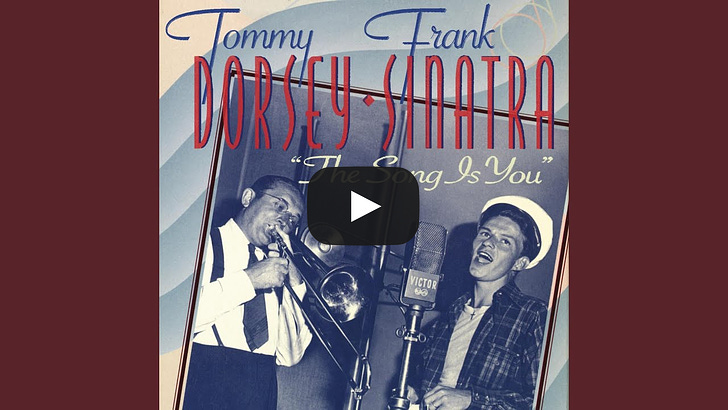 Poor reporting aside, why wasn’t I able to find anyone who had heard of the Sinatra performance at Belleville High School? I can’t be sure, but reiterating some historical context is important. In 1941, Frank Sinatra was not the household name that he is today. He was a talented singer with a burgeoning fanbase and a ton of ambition. It’s important to note that in both the Nutley and Belleville articles he is identified as a member of Tommy Dorsey’s band. The Sinatra brand and aura were not established yet. With that in mind, it makes more sense that the events aren’t well-documented or well-remembered. Imagine Sinatra had not become one of the greatest entertainers of the 20th century. In that case, you wouldn’t find it odd that an obscure singer’s 15-minute performance at a high school was lost to history. Hindsight blinds us in this situation. Nevertheless, I am grateful that The Belleville News decided to print their 58 words of shoddy coverage on this event. On a personal level, it gives me hard proof of a family story that I’ve heard for a long time. But more generally, this discovery makes a small contribution to Sinatra scholarship. After I found The Belleville News article confirming my grandmother’s recollection, I got in touch with three Sinatra experts — Will Friedwald, Michael Kraus, and Robert Waldman — to see if they’d ever heard of this performance. In the course of our conversation, they told me that the Nutley High School performance was previously known, but they weren’t aware of the Belleville High School performance. That’s pretty cool! Furthermore, the fact that Sinatra performed two solo shows while he was still in Tommy Dorsey’s band provides evidence not just of his determination to make it on his own but that there might be other small solo performances that he was undertaking while still in the Dorsey group. The common wisdom is that he wouldn’t have been able to do that at that the time. This doesn’t buck that notion. But it suggests that there might be more research to do. And some of that research might have to be done by looking for mentions of “Frank Sonatra” rather than “Frank Sinatra.” By 1945, the press had learned how to spell the singer’s name, but before that, I found regular mentions of “Frank Sonatra” in many newspapers. Maybe there are some treasures from Frank Sinatra’s early career that haven’t been uncovered because some people were confusing their vowels. That’s a mystery for someone else to resolve, though. If you’ve made it this far, thank you for reading. This has been the most difficult yet rewarding story I’ve ever written. It’s also been the most expensive. I had to subscribe to multiple news archives and journals to access all of this information. If you want to make more research like this possible, consider taking out a paid subscription to this newsletter. Paid subscribers get access to four additional newsletters each month. This piece also wouldn’t have been possible without the help and inspiration of a few people. First, an eternal thanks to my grandmother for keeping this history alive. I know that wherever she is now, she’s wondering why I didn’t just trust her. Second, to my friend Ken De Poto for assisting me in this process. He’s the only person I know willing to spend weeks digging through ancient newspapers. Third, to all of the people who took the time to respond to my questions about Frank Sinatra and Belleville, including my mother, Raymond Carissimo, Richard Muti, Joe Cozzarelli, David Morrell, Frank Cozzarelli, Will Friedwald, Michael Kraus, Robert Waldman, Vinny Cozzarelli, Bobby Cozzarelli, John Franklin, Ande Flavelle, Bob Davison, Marc Lorenc, Robert Foster, Caleb Rhodes, and the descendants of both Gene Cox and Dorothy Costello. Finally, to my father and my girlfriend Devin Portilla for giving this story a close read before publication. If you want to learn more about Frank Sinatra, here are a few books that I found indispensable.
Finally, if you want to check out my favorite Sinatra recordings, I’ve put together a playlist below.
|
Search thousands of free JavaScript snippets that you can quickly copy and paste into your web pages. Get free JavaScript tutorials, references, code, menus, calendars, popup windows, games, and much more.
Did Frank Sinatra Really Perform at My Grandma's High School?
Subscribe to:
Post Comments (Atom)
Top 3 UX Design Articles of 2024 to Remember
Based on most subscriptions ͏ ͏ ͏ ͏ ͏ ͏ ͏ ͏ ͏ ͏ ͏ ͏ ͏ ͏ ͏ ͏ ...
-
code.gs // 1. Enter sheet name where data is to be written below var SHEET_NAME = "Sheet1" ; // 2. Run > setup // // 3....
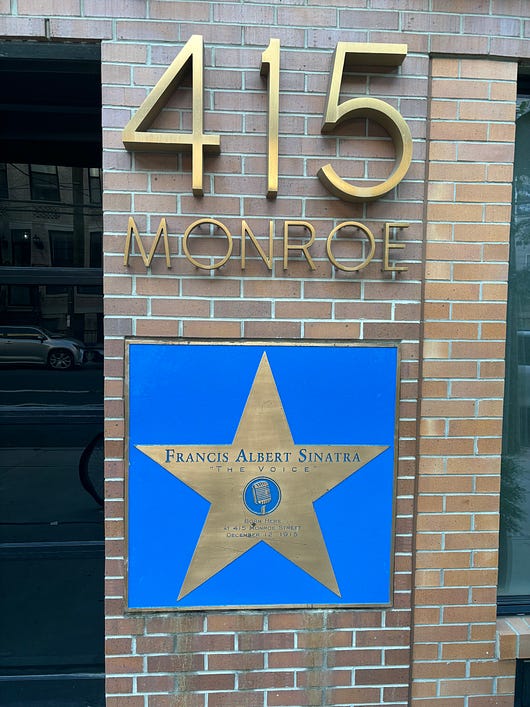

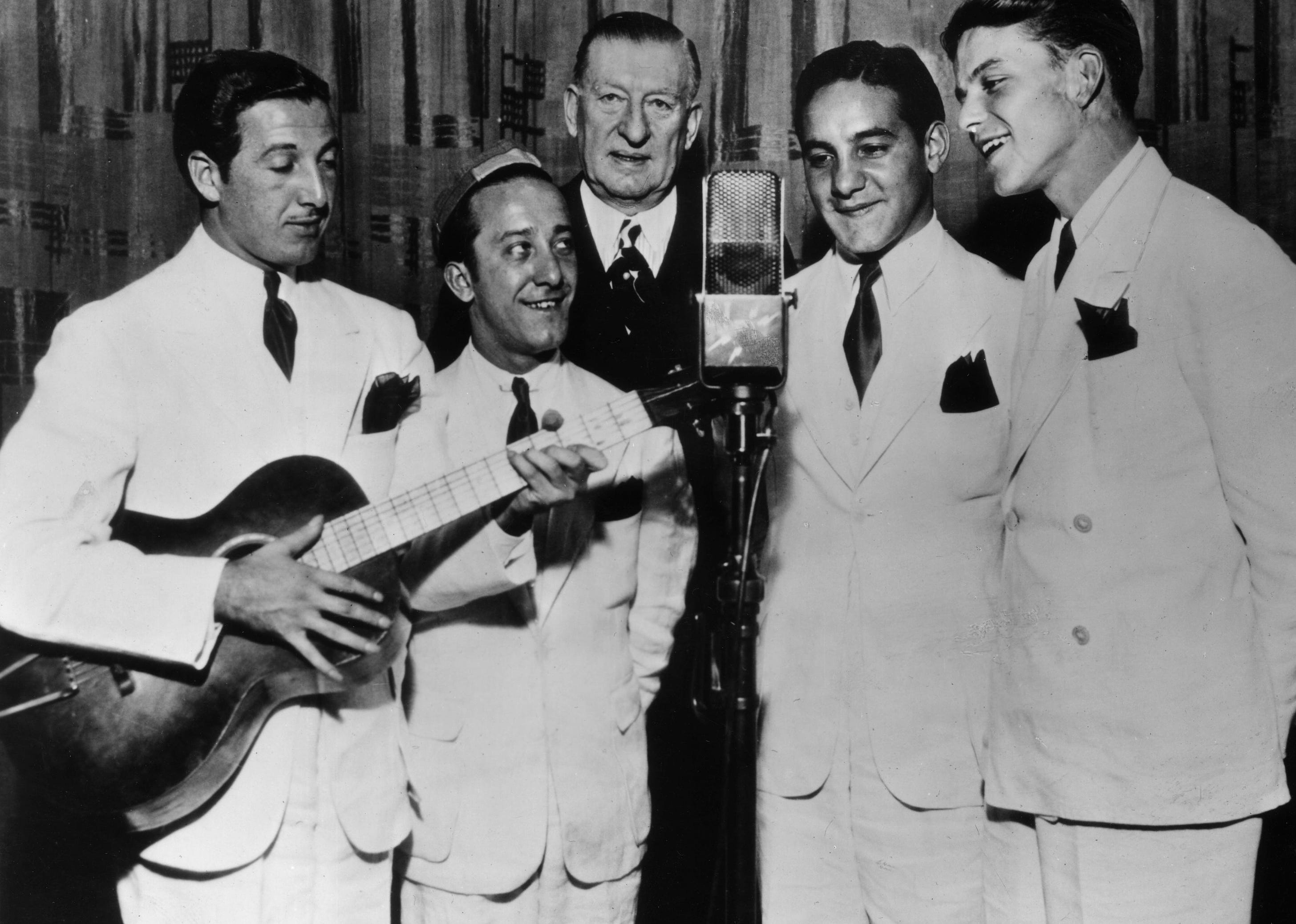
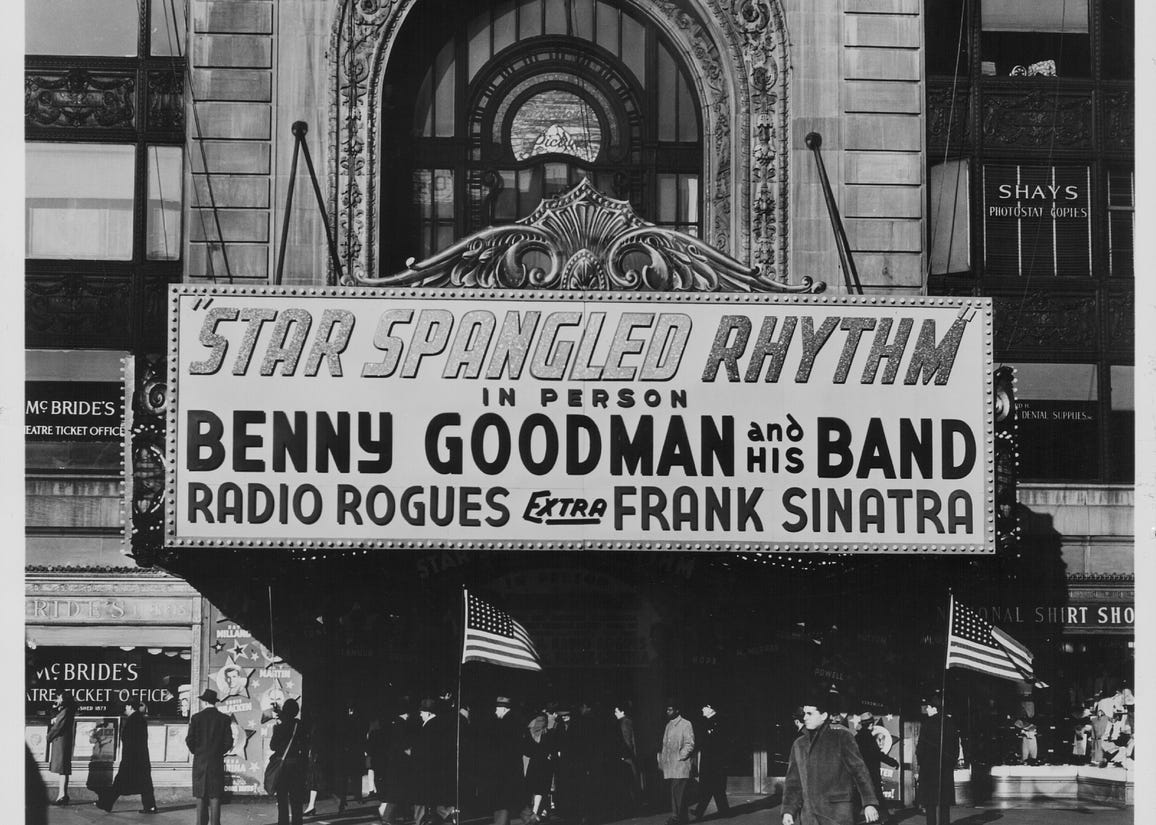

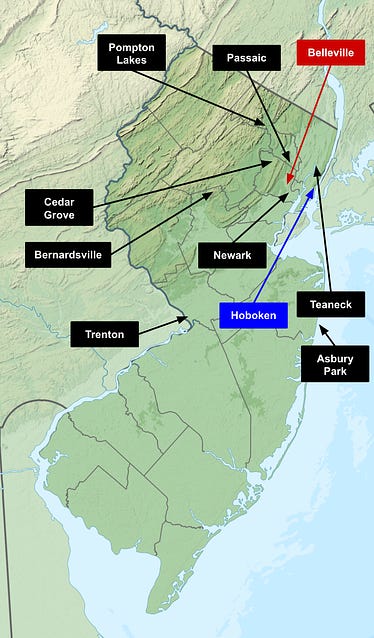


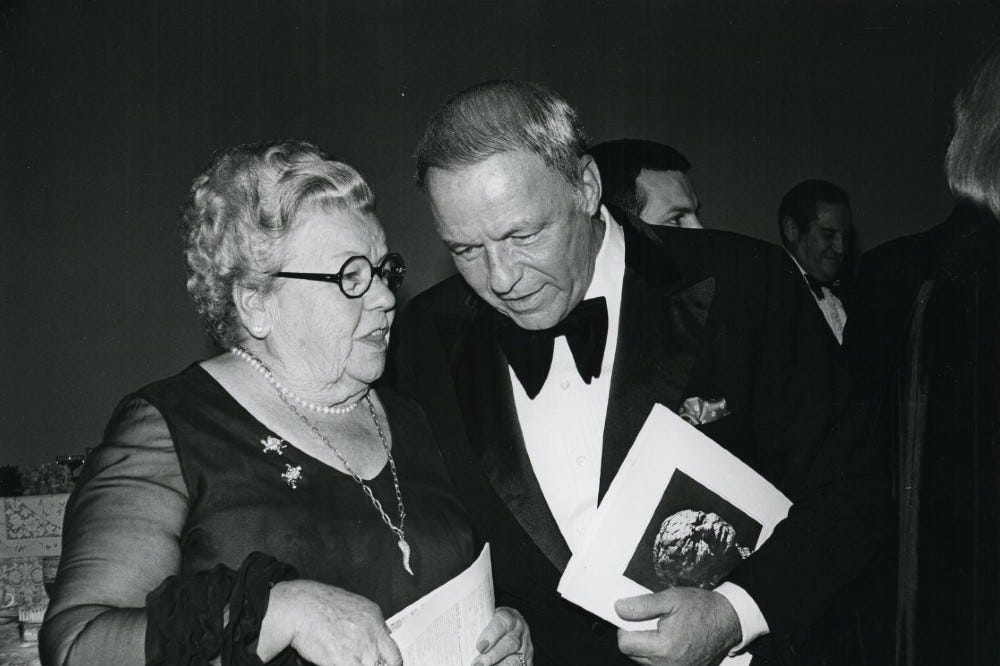
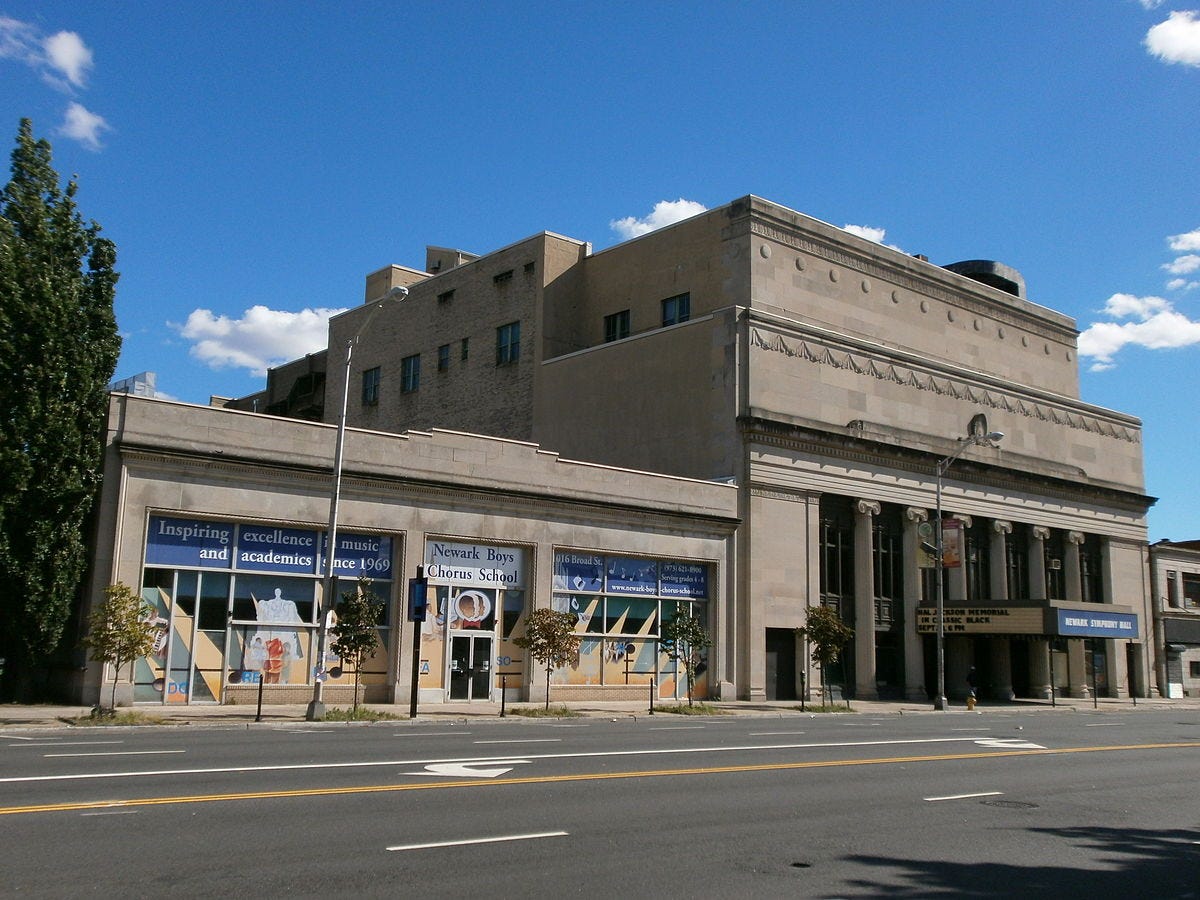
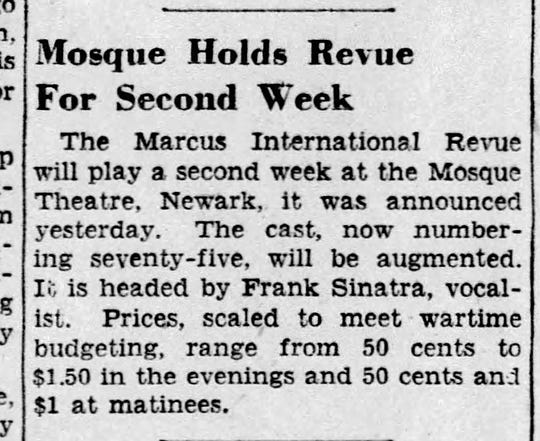


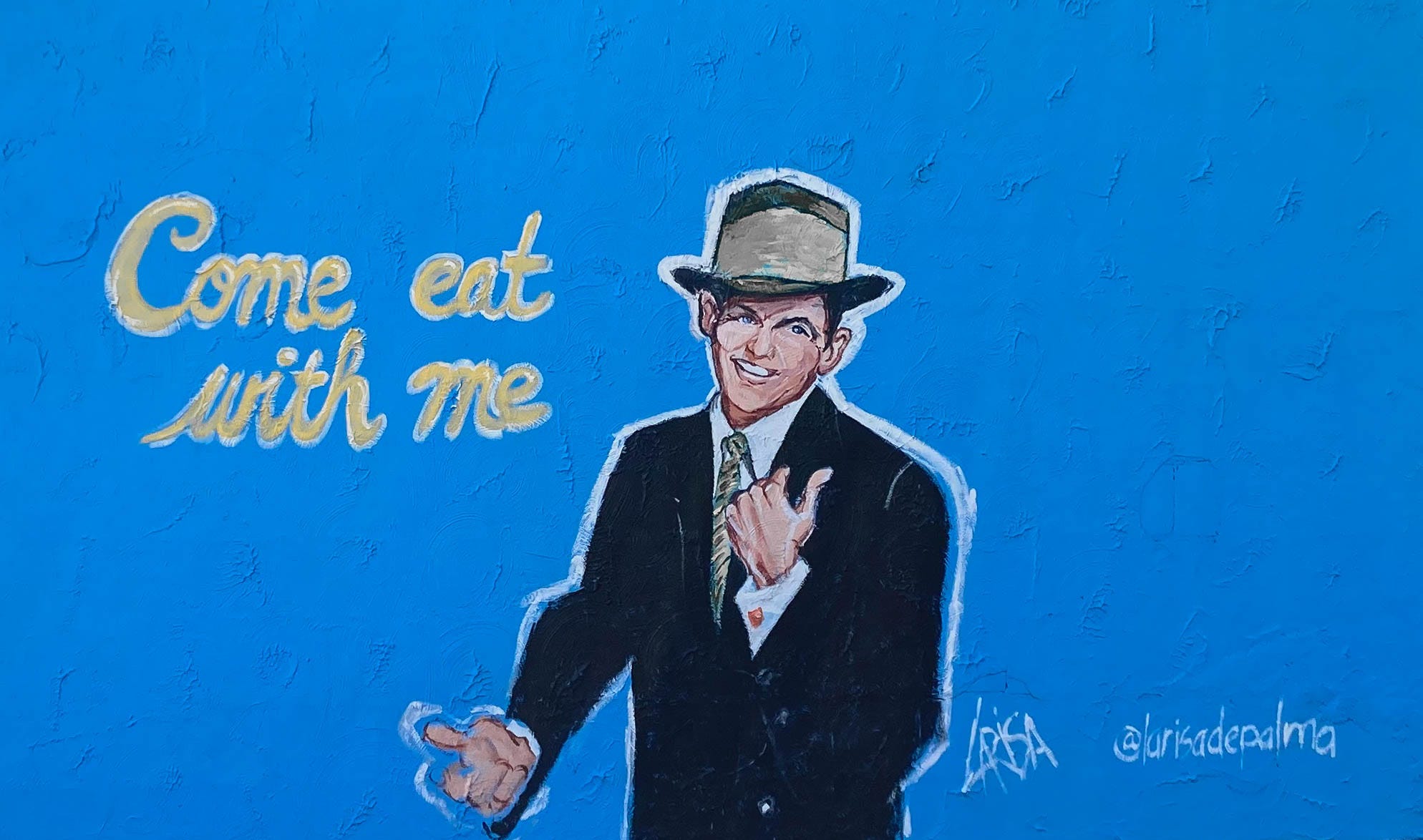
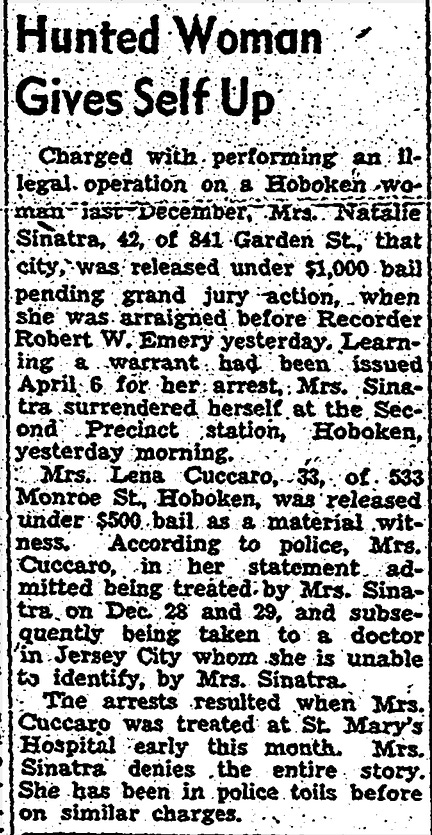



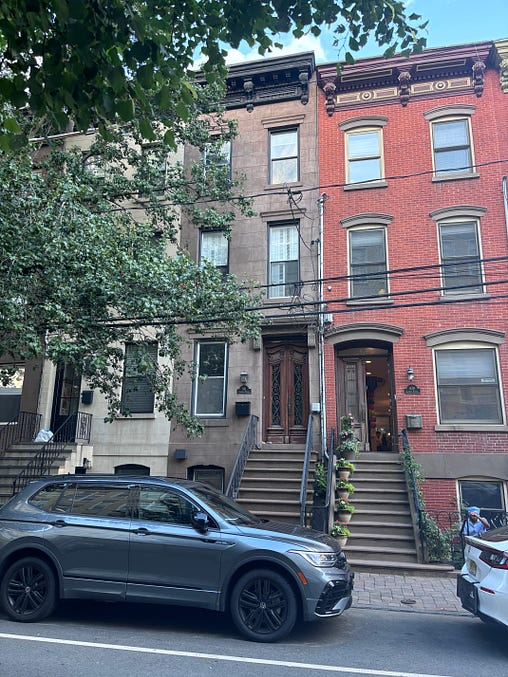

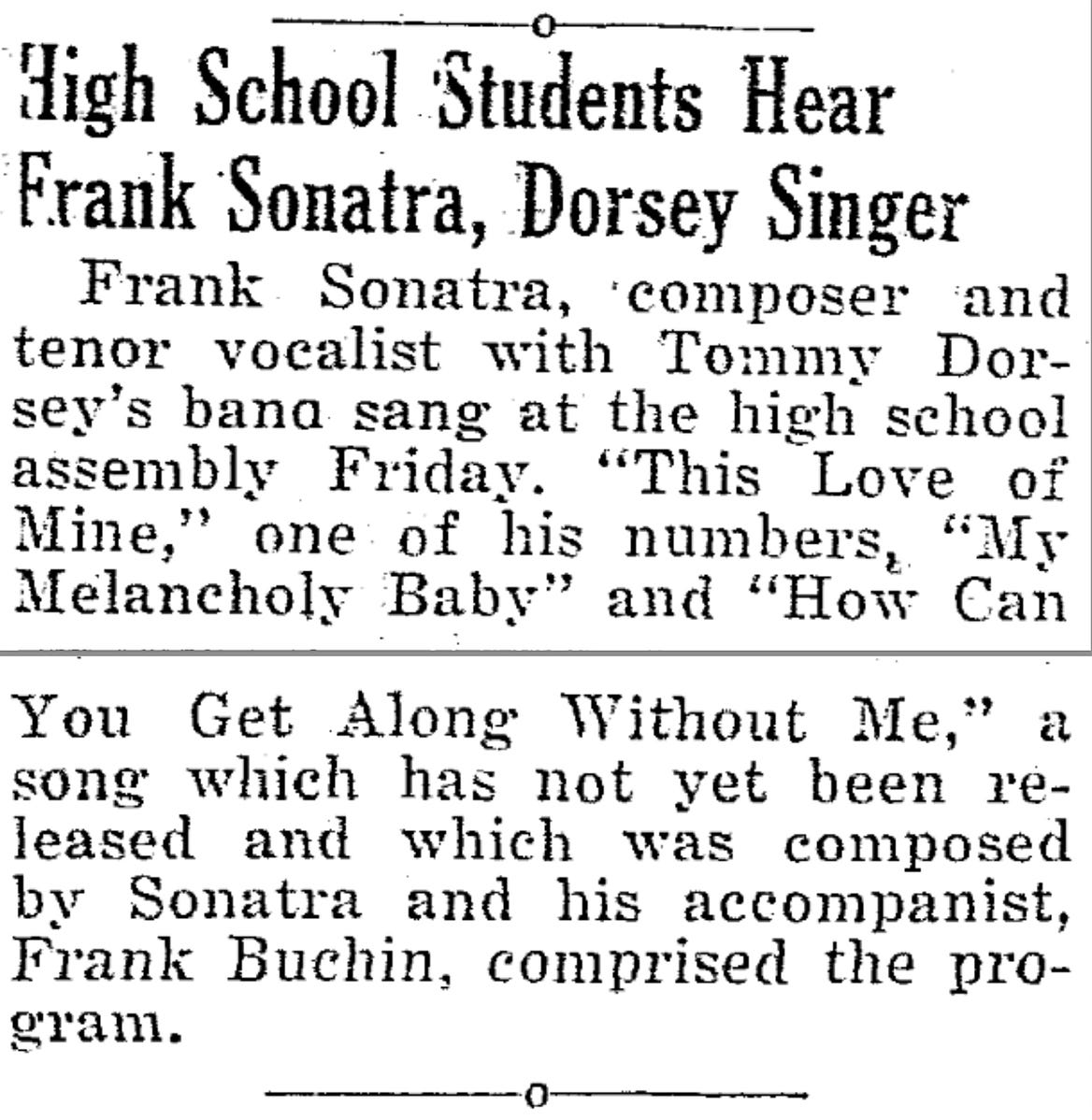

No comments:
Post a Comment